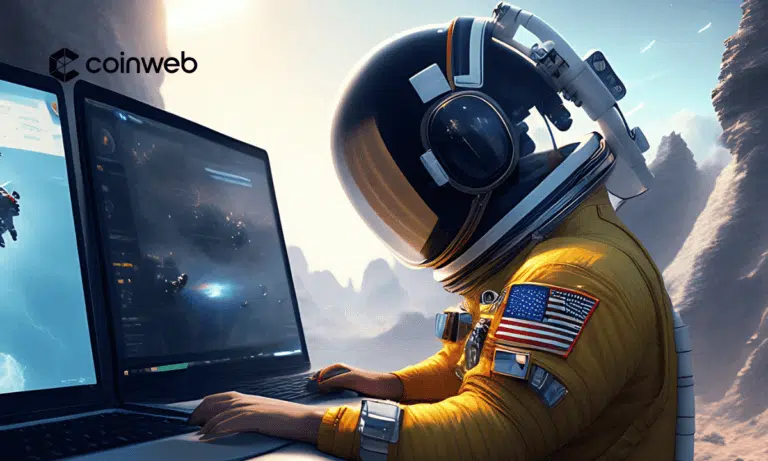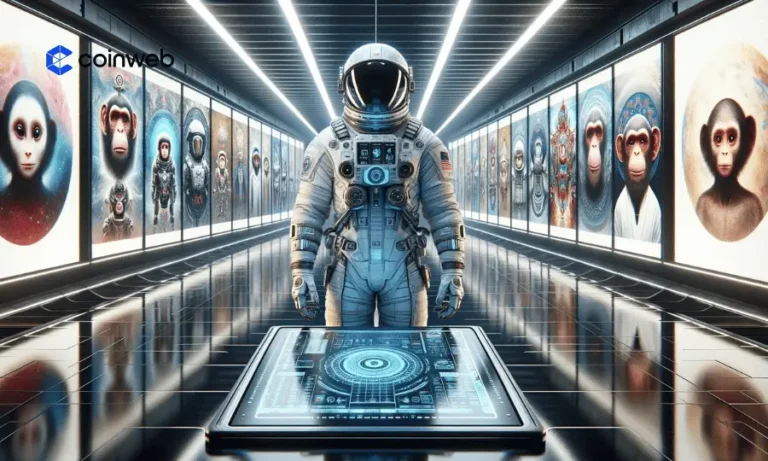NFT Mystery Boxes are digital packages containing a random assortment of non-fungible tokens (NFTs), each with different rarity levels.
Similar to trading card booster-packs, the thrill comes from not knowing what’s inside – but at the same time knowing there’s a small chance of receiving a rare, high-value item.
In this article, we’ll cover everything you need to know about NFT mystery boxes, including what they are, how they work, and how to use them.
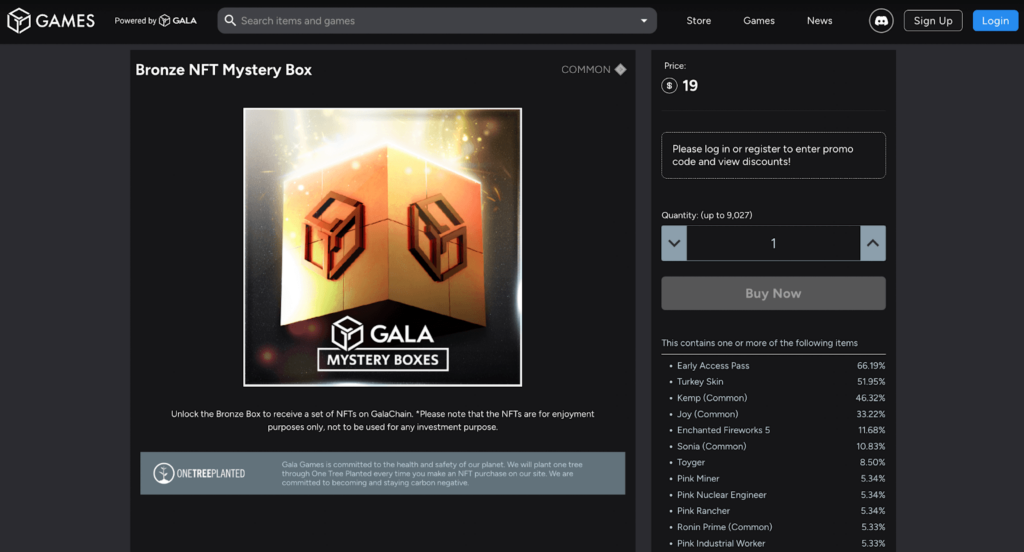
Where are NFT Mystery Boxes Used?
NFT mystery boxes are used across a range of use cases and platforms, from NFT marketplaces to blockchain-based games.
They’re often used to introduce a new NFT collection or drop, giving every buyer a fair shot at getting rare items. This is done either directly via a project’s smart contract or through popular NFT marketplaces such as Opensea, Magic Eden, and Binance NFT.
When it comes to in-game mystery boxes, they are used to introduce new assets, characters, or abilities to the ecosystem.
Aside from major drops, lower-value mystery boxes can also be used as a reward or giveaway item to incentivize community participation on social media or on-chain.
How do NFT Mystery Boxes Work?
The general idea of what type of item(s) you’ll get in an NFT mystery box is usually communicated, but the specific items and rarity are not revealed until they are opened.
Buyers will usually purchase an NFT mystery box from NFT marketplaces and can keep it closed as long as they like, even reselling it in its closed state if they wish.
When it comes to opening the mystery box, the contents of an NFT mystery box are randomly generated, according to a set of predefined rules. This random generation uses blockchain tools to ensure the distribution is done fairly and transparently.
Types of NFTs in Mystery Boxes
The type of NFTs in any mystery box can vary greatly. This depends mostly on the provider and the platform used. However, you’ll usually know up-front what you can expect to get. Or at least the percentage of winnings.
NFT mystery boxes can include any type of NFT asset, most often one of the following:
Digital art
Digital art on the blockchain is the original and most well-known type of NFT. This covers digital artworks by talented artists like Beeple, or simple profile picture (PFP) artwork collections such as CryptoPunks.
These don’t always have clear utility or underlying value, but they are centered on their collectible nature and the buyer’s simple visual appreciation.
In-game items
In-game items are a more concrete use-case of NFT, and one of the top choices for NFT mystery box contents.
Blockchain gaming providers may fill NFT mystery boxes with tools, weapons, characters, or any other items usable in their games, integrating seamlessly with their specific gaming ecosystem.
These NFTs enhance the gaming experience by giving users potential in-game advantages or unique abilities, as well as offering a way for players to own a piece of the game itself – which can be traded or sold outside the gaming platform.
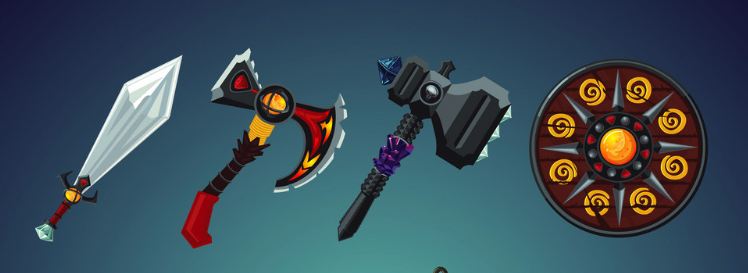
Utility tokens
Utility tokens are special types of NFTs that aren’t used for their visual appeal or functions in games, but rather give their holders certain rights or privileges within a project or platform.
This could include perks such as access to exclusive content or services, especially one-off or VIP privileges.
They act as a key to unlock experiences or services that are otherwise unavailable to the general public.
Virtual real estate
Virtual real estate includes parcels of land or properties within digital worlds or metaverses – a world that we all know is rapidly growing.
Owning virtual real estate offers creative and commercial potential, like hosting virtual events, creating digital storefronts, or even just advertising in the digital world.
Although the concept may seem far-fetched to some, virtual real estate is in high demand and continues to grow proportionally to each new popular game or world.
Why Do People Buy NFT Mystery Boxes?
For the average Joe in the NFT space, buying an NFT mystery box provides a shot at acquiring an otherwise unaffordable collectible, along with minimal downside. The best part is also the dopamine shot you get from opening a mystery box.
In some regards, this makes NFT mystery boxes similar to a trading card booster pack or a lottery ticket. But there’s also a psychological aspect that not everyone may immediately notice…
The psychology behind the purchase of mystery items
The attraction of NFT mystery boxes has many roots in human psychology, driven by a combination of distinct factors:
- Thrill of uncertainty
- Novelty seeking
- Anticipation of reward
Each of these aspects stimulates the brain’s reward system.
Social pressures, including the fear of missing out (“FOMO”) and influencer backing, boost the appeal and push us to participate that extra bit more. After all, nobody wants to miss out on a shared experience, or a shot at getting their hands on exclusive items – especially for cheap!
Everyone who participates has the opportunity to receive even the rarest items in the collection, meaning that you or I will pay just as much as any other participant (whale or otherwise) and have an equal chance of the biggest payoff.
Overall, the perceived value of NFT mystery box contents, paired with the psychological effects, is often much higher than the price tag on the mystery box itself.
Where can I Buy NFT Mystery Boxes?
NFT mystery boxes can be bought and resold on a huge variety of platforms, depending on the provider and their supported blockchain.
Here are just a few of the more popular ones:
OpenSea
OpenSea is probably the best-known and most popular NFT trading platform for regular users. It was founded in 2018 and has a strong track record as a place for launching, buying, and selling NFTs.
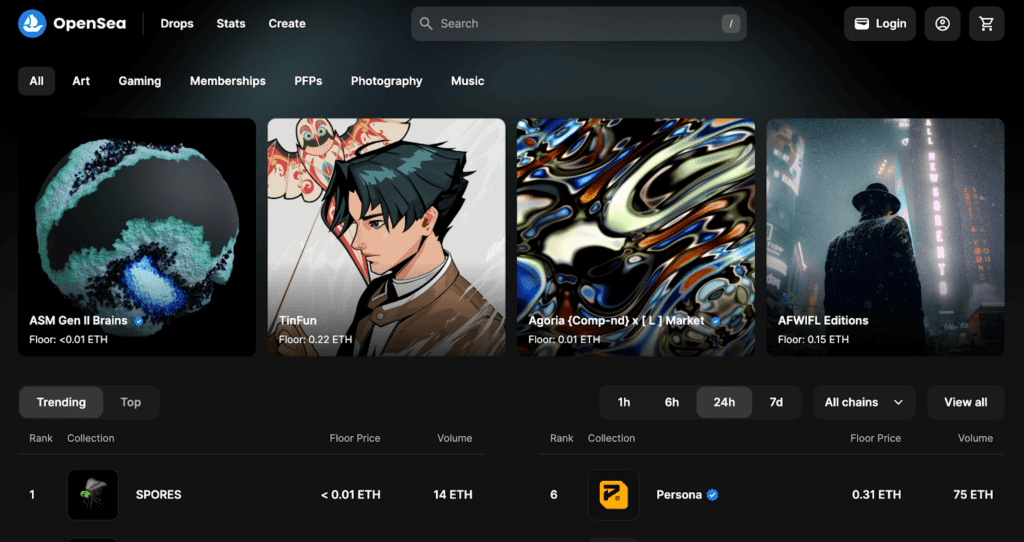
OpenSea is all on-chain, meaning that each listing, bid, purchase, or sale needs to be processed on the blockchain – which means transaction fees. It supports several blockchains.
OpenSea verifies popular collections, making it a safe and secure place to buy higher-profile NFT mystery boxes. On the other hand, it may not be the best place to buy more obscure drops and collections.
Binance NFT
Binance NFT is an NFT marketplace run by the Binance exchange, catering to NFTs from BNB Chain, Ethereum, Bitcoin, and more.
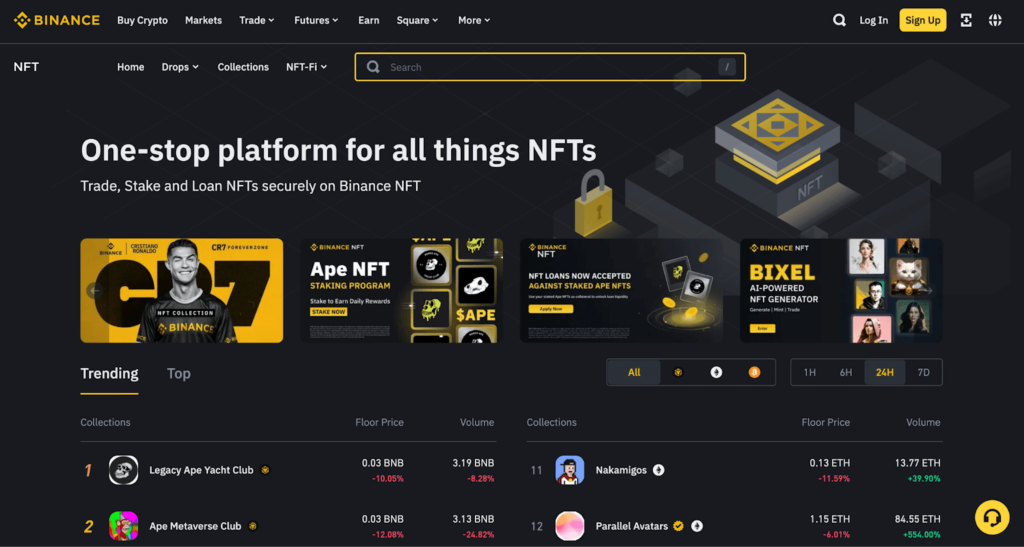
It provides plenty of NFT trading activity and features, including drops and mystery box sales from a range of vetted projects. However, one key difference for Binance NFT is that you have to be a verified Binance exchange user to use the platform.
There are also some cool additional features like NFT staking and NFT loans, which are nice touches.


More details
Binance NFT marketplace, a low-fee platform, enables users to trade various NFTs, including gaming, collectibles, art, and sports. Unavailable for U.S. customers, it's accessed through Binance's primary platform. Overall a great NFT platform recommended for new users.
-
Low trading fees.
-
Big-name collaborations.
-
Gaming NFTs for P2E games.
-
USer friendly.
-
Educational resources
-
Not available in the U.S.
-
Binance's regulatory challenges.
-
Unpredictability for features.
-
Pre-approved creators can mint.
Gala Games
Gala Games is a blockchain gaming platform that enables users to own their in-game items in the form of NFTs. It has a significant user base and an impressive range of play-to-earn games.
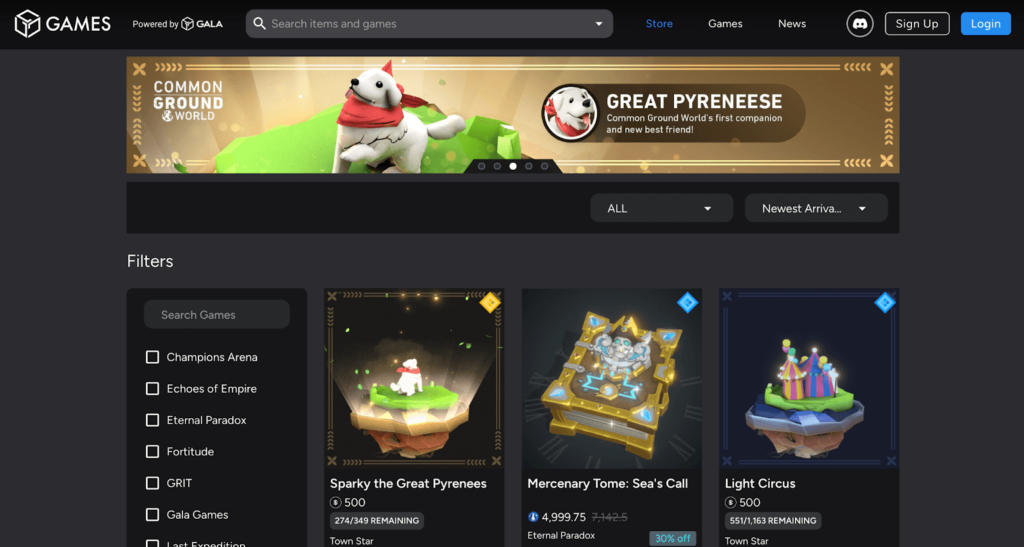
The platform has a store where users can purchase these in-game NFT items, including NFT mystery boxes. All purchases are made in the platform’s native $GALA token, which means you can’t directly use more common cryptocurrencies for payment.
Gala Games also has its own blockchain, although it also works in conjunction with Ethereum.
Comparing purchase options
If you’ve had any experience with any of the above platforms, you’ve probably also noticed that there’s more than one way to buy an item on a marketplace.
These different methods or styles usually take the form of one of the three following:
- Direct Buy: Outright buying at a fixed price. Simple and immediate, though you might pay a bit more.
- Auction: You bid against others for the NFT. It’s a mix of strategy and luck, with the potential for great deals or expensive battles.
- Blind Bid: You make a secret offer, hoping it’s just right. It’s a bit of a gamble, offering excitement but with the risk of overpaying.
The method you choose is sometimes up to you, fitting your time and budget constraints. Direct buys can save waiting time and rule out competing bidders, whereas the other methods may save you money but take more time and risk of being outbid.
Other times, it will just depend on what is available for the NFT mystery box that you choose.
How to Buy & Open an NFT Mystery Box
Buying and opening a mystery box is a purely digital process.
The trickiest part is usually finding and choosing a marketplace and NFT mystery box to buy, while the rest is a nicely guided process.
Note that for decentralized platforms, both the actions of buying and opening an NFT mystery box might require you to pay network fees to confirm the transactions. On the other hand, centralized platforms and gas-free blockchains may need nothing other than the click of a button.
Once you open the mystery box, the NFTs contained inside are revealed, transferring ownership to your wallet immediately.
Here’s a summary of the process:
1. Navigate to the relevant NFT marketplace.
2. Select the NFT mystery box of your choice.

3. Add it to your “cart” on the relevant platform, or click “Buy now”.
4. Pay the price plus any necessary transaction fees, by confirming it in your wallet.
5. Digitally open the box on the relevant platform. Note that this is sometimes done on a different platform than the one on which the mystery box was purchased.
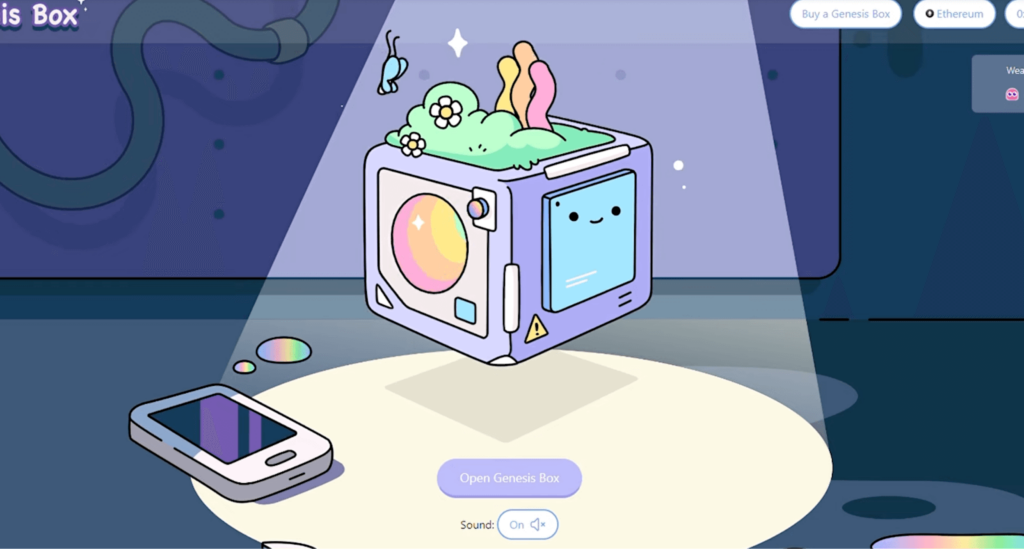
6. Voila! You now have mystery NFTs in your wallet.
But be warned!
Only NFT mystery boxes from trusted sources should be interacted with on trusted platforms. You don’t want to interact with malicious smart contracts or make fishy transactions.
Make sure the URL of the website you are on is correct, and don’t click on any dodgy links. Security should always be your first priority.
Opening an NFT mystery box: video example
For an example of the entire process for an NFT mystery box from the well-known project, Doodles, check out the video below:
Keep in mind that all NFT mystery boxes may do this in a slightly different way – it’s your job to make sure you check the official instructions for your specific mystery box!
What should I do with my NFT mystery box?
What you do with your NFT mystery box is entirely up to you. You can resell it without opening it on a relevant NFT marketplace or open it and do with the contents as you choose.
Just keep in mind that you cannot close an NFT mystery box once it has been opened! Once it’s open, it’s open forever.
You can choose to keep, display, or sell your NFTs. The developers’ ecosystem built around the mystery boxes usually determines what you can use them for. It could be just for aesthetic value, access to apps, or other utility, such as in-game uses.
Risks of NFT Mystery Boxes
Just like any crypto asset or investment, there are downside risks associated with NFT mystery boxes.
This comes down to three main types of risks:
- Human error
- Smart contract risks
- Loss of value
Human error
Human error risks are quite self-explanatory – they capture anything that involves you, as a crypto user, making any slip-ups when conducting transactions with your NFT mystery box.
Simple mistakes in the NFT world are quite common due to how new some NFT users are to the web3 world. For newcomers to crypto, it can be hard to differentiate between what is a dodgy website, platform, or transaction.
Hence, stick to trusted platforms, wallets and websites – and always check the url and transaction data before confirming anything.
Unfortunately, scams are very common in the NFT world.
Smart contract risks
Smart contract risks involve potential issues with the code for the NFT mystery box and the platform it’s based on.
Any bugs in the code pose a small (but credible) risk to the project and the user. This could trigger anything from small to major issues, such as the mystery box malfunctioning to the entire project being compromised.
Loss of value
Perhaps the most obvious risk is that the NFT mystery box (or its contents) will lose its value—and, as a result, you will lose money.
It’s an old and tired piece of advice in crypto, but it’s also repeated constantly for good reason: Never invest more than you can afford to lose!
Regardless of whether it’s your own human error, a bug in the smart contract, or your investment simply loses popularity, the risk of your NFT mystery box losing value is very real.
How to tell if a mystery box is a worthwhile investment
Figuring out if an NFT mystery box is a good investment is a tricky game – you’re not even supposed to know what you’re going to get!
However, there are a few important steps to give yourself the best odds of getting your money’s worth:
- Evaluate the project: Is it a good idea? Is it unique? How popular is it likely to be?
- Who’s behind it? Do the artists and development team have a good track record?
- Who’s funding the project? Are there any notable investors or partnerships?
A promising future for the project itself is a good indicator of whether or not your mystery box items will be sought after.
How to Sell or Use Your NFTs After Unboxing
Your NFT mystery box will most likely be available for use within the specific project’s ecosystem. This could be in the domains of art, gaming, or utility NFT assets.
In most cases, they will be tradable or sellable, via one or more NFT marketplaces. Finding the most compatible marketplace typically depends on the project’s ecosystem, blockchain, and partnerships. These factors often guide users to the optimal platform for buying and selling items within that collection.
For sellable items, you’ll need to:
- Find the right marketplace
- Find the collection within that marketplace
- Choose your selling price, currency, and confirm the listing
- Wait for buyers to bid or purchase your item outright.
Remember that NFT’s often aren’t quite as quick and easy to sell as other crypto tokens. So there may be a lot of waiting!
The Future of NFT Mystery Boxes
Emerging trends suggest a diversification of contents and integration into broader digital experiences, potentially enhancing the relevance and appeal of these boxes.
Playing the chance game never gets old, and NFTs are only getting more widely used. So, chances are that NFT mystery boxes are here to stay.
Besides, with the rise of the tokenization of real world assets (RWAs), we will likely see an expansion of NFT mystery boxes into a wider field of goods. Generally, this may include items that exist in the physical world.
Raffles and lottery on the blockchain, anyone?
FAQ
An NFT Mystery Box is a digital package containing an unknown assortment of non-fungible tokens (NFTs), which can include anything from digital artwork and collectibles to in-game items and virtual real estate.
The contents of the box remain a surprise until it's opened, adding a layer of excitement and anticipation for the buyer.
Yes, just like any crypto asset, the value of NFT Mystery Boxes can fluctuate based on market demand and rarity of the contents inside.
While there’s always a chance that some boxes may increase in value due to containing rare and sought-after items, others may fall in value if the included NFTs don’t hold significant interest to other collectors.
When buying or selling NFT Mystery Boxes, you can definitely run into some hidden or additional costs. These could include transaction fees on the blockchain, listing fees on marketplaces, and possibly taxes on gains from sales.
To avoid any nasty surprises, make sure you research and understand the fee structure of the blockchain and NFT platform that you’re using.
To make sure the NFTs in mystery boxes are legitimate, always buy them from reputable NFT marketplaces that verify their listings and offer transparency about the creators.
Some platforms also provide built-in tools or features to verify the rarity and ownership of the NFTs contained within the mystery boxes.
If in doubt, don’t follow through with an NFT mystery box purchase. NFT users are one of the most-targeted groups in crypto for phishing and scams.
Choosing the most promising NFT Mystery Box involves researching the reputation of the creators or companies offering the boxes, the quality of NFTs potentially included, and the historical value of similar NFTs.
You may also want to consider the potential rarity and exclusivity of the items, as well as overall demand within the NFT community. Engaging with the community through forums or social media can also give you great insights into trending or valuable boxes.








